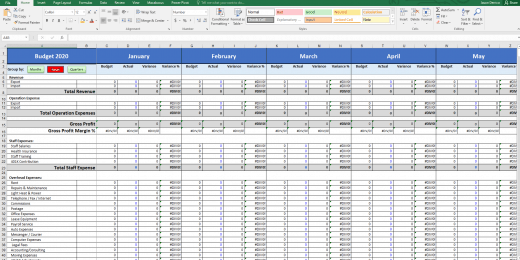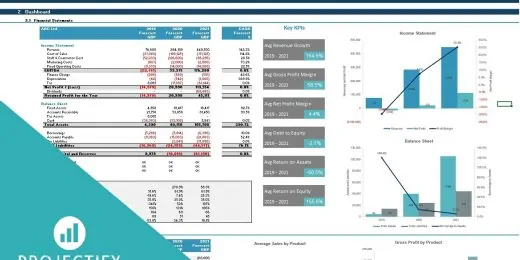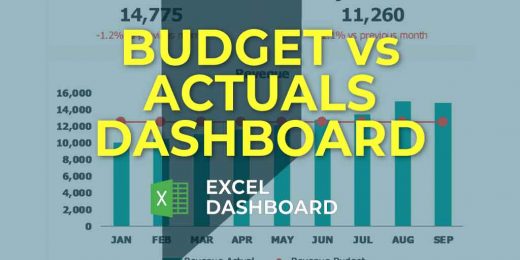Revolutionize Your Approach to Formula for Liquidity Ratio

Revolutionize your approach to liquidity ratios by embracing innovative financial tools and analysis techniques. Streamline this crucial aspect of financial health assessment to achieve better insights.
Liquidity ratios are essential for evaluating a company’s ability to meet short-term obligations, and a fresh perspective can enhance the accuracy and relevance of these financial metrics. By focusing on the most critical liquidity ratios, such as the current ratio, quick ratio, and cash ratio, businesses can effectively monitor their financial stability.
A new methodology in assessing these ratios might involve real-time data analysis, predictive analytics, and integrating contextual industry factors to get a clearer picture of a company’s liquidity. Adapting to advanced technologies and updated financial frameworks can provide a competitive edge, thus transforming the traditional approach to liquidity assessment. Tailored analysis can help companies navigate through volatile markets and maintain financial resilience.
The Basics Of Liquidity Ratios
Understanding liquidity ratios is key to mastering a company’s financial health. These ratios reveal how well a company can pay off its debts. A higher liquidity ratio means more buffer for settling financial obligations. Accountants and analysts use these ratios for insights into short-term financial stability.
Purpose In Financial Analysis
Liquidity ratios are part of financial analysis. They help stakeholders measure a company’s ability to cover its debts. Here’s why they matter:
- Assess risk: Creditors look at liquidity to gauge risk before lending.
- Maintain cash flow: Businesses need to ensure they have enough liquid assets.
- Avoid insolvency: Companies must pay short-term liabilities to remain operational.
Common Types
Different liquidity ratios focus on various aspects of financial health. Let’s dive into some common ones:
| Ratio Type | What It Shows |
|---|---|
| Current Ratio | Ability to pay short-term debts with current assets. |
| Quick Ratio | Ability to pay immediate liabilities without selling inventory. |
| Cash Ratio | Liquidity with just cash and cash equivalents. |
Each ratio leaves its own trail of clues. They unveil a story about financial resilience. Focused analysis with these ratios guides better decision-making. To revolutionize an approach, understanding the vital signs of liquidity is imperative.
Key Components Of Liquidity Measurements
Understanding the key components of liquidity measurements is crucial to revolutionize approach to financial stability. These components help ensure your business can meet short-term obligations. They indicate financial health and operational efficiency.
Current Assets And Liabilities
Current assets refer to resources a company can quickly turn into cash. These usually include cash, marketable securities, accounts receivable, and inventory.
Current liabilities are what a company must pay within a year. They cover debts, accounts payable, and other short-term obligations.
| Current Assets | Current Liabilities |
|---|---|
| Cash | Debts |
| Marketable Securities | Accounts Payable |
| Accounts Receivable | Short-term Obligations |
| Inventory |
The Cash Conversion Cycle
The cash conversion cycle (CCC) measures how fast a company turns its inventory and other assets into cash.
- Inventory Days: Time to sell inventory.
- Receivables Days: Time to collect payments.
- Payables Days: Time to pay suppliers.
A shorter CCC shows a company can quickly generate cash. This helps to cover its liabilities without stress.
Mastering these components streamlines your approach to the formula for liquidity ratio. They ensure a robust analysis of financial resilience.
Breaking Down The Current Ratio
Understanding the Current Ratio is like unlocking a secret chamber of financial stability. It reveals the ability of a business to pay its debts. Quick and easy, it shows if a company has enough resources to cover short-term obligations.
Formula And Interpretation
The equation is simple: Current Assets divided by Current Liabilities. The result? A number that tells a story. A ratio above 1 indicates more assets than liabilities—a good sign. Below 1 suggests caution, as liabilities outweigh assets.
| Current Assets | Current Liabilities | Current Ratio |
|---|---|---|
| $500,000 | $250,000 | 2 |
Think of it as a financial health check-up. This single number can shine a light on the operational efficiency of a business.
Strengths And Limitations
- Quick snapshot: It offers an instant measure of liquidity.
- Investor confidence: A tool to assure investors of financial soundness.
- Easy comparison: Compare across the industry for benchmarking.
Yet, the Current Ratio isn’t perfect. It doesn’t account for timings of asset liquidations and liabilities maturing. Sometimes, it can mislead. For instance, it might include inventory that can’t be easily turned into cash.
- Inflated assets can skew the ratio.
- It’s a static picture—not showing the day-to-day changes.
Key takeaway? The Current Ratio is a valuable tool, but savvy financial analysis always looks beyond the number. It’s a starting point—not the whole story—diving deeper is essential for true financial insight.
Quick Ratio Insights
The quick ratio, an essential financial metric, offers deep insights into a company’s short-term financial health. Unlike the current ratio, the quick ratio measures the ability to cover current liabilities without relying on inventory. It focuses solely on the most liquid assets, ensuring a conservative perspective on liquidity. Understanding the quick ratio can help businesses manage their resources effectively and secure a stable financial foundation.
Adjustments For More Accurate Analysis
Accurate quick ratio analysis demands careful adjustments. These adjustments might involve:
- Removing prepaid expenses as they are not readily convertible to cash.
- Reassessing accounts receivable based on collectability.
- Accounting for short-term notes that may be due within the year.
| Account Type | Action Required |
|---|---|
| Prepaid Expenses | Exclude from Assets |
| Receivables | Assess Collectability |
| Short-term Notes | Include in Liabilities |
Implementing such adjustments provides a more realistic view of a company’s liquidity.
Industry-specific Considerations
Different industries often have varying standards for healthy liquidity levels. For example:
- Retail firms typically have lower ratios due to high inventory levels.
- Service-oriented businesses might show higher ratios because they hold less inventory.
Comparing within the same sector ensures a relevant benchmark for liquidity analysis.
Cash Ratio Nuances
Exploring the subtleties of the Cash Ratio reveals how businesses maintain financial health. This ratio is more than a number. It tells a story of immediate readiness to pay debts.
Focus On Immediate Solvency
Companies emphasize immediate solvency to prove they can meet short-term obligations. The Cash Ratio is a strict metric that considers cash and cash equivalents against current liabilities.
- Companies count on-hand cash and marketable securities.
- These assets are most liquid, offering a clear solvency picture.
- A higher Cash Ratio implies stronger immediate solvency.
Financial experts use this figure to gauge a company’s ability to survive short-term dips.
Risk Assessment With Cash Ratio
The Cash Ratio serves as a critical tool for risk assessment. It helps investors and creditors understand the risk of lending to or investing in a business.
| Cash Ratio | Risk Level |
|---|---|
| < 1 | Higher Risk |
| 1 – 1.5 | Moderate Risk |
| > 1.5 | Lower Risk |
A ratio under 1 signals potential liquidity issues, while a ratio over 1.5 indicates better liquidity and less risk.
Innovative Liquidity Metrics
Businesses succeed with smart decisions and solid numbers. That’s where Innovative Liquidity Metrics soar. They are the new wings that give your financial health an eagle’s view. Let’s dive into the world where these measures change the game for analyzing financial stability.
Emerging Tools And Techniques
Exploring the latest liquidity resources unveils a treasure trove of precision tools. Real-time dashboards light up with easy-to-read gauges for cash positions. With advanced algorithms, these adopt modern strategies beyond the classic ratios:
- Cash Conversion Efficiency (CCE) – Tracks how swiftly your business turns investments into cash flow.
- Liquidity Gap Analysis – Highlights timing differences between cash inflows and outflows.
- Volatility Analysis – Measures how changes in the market affect your liquidity.
These tools encapsulate breadth and depth, offering a panoramic yet granular view of your company’s liquid assets.
Integrating Technology Into Analysis
Embracing technology in liquidity assessment is like attaching a super-engine to your business jet. Analytical software platforms now execute complex calculations in seconds. They integrate multiple data sources for an informed, cohesive snapshot of fiscal health.
| Technology | Benefits |
|---|---|
| AI and Machine Learning | Predictive insights, anomaly detection |
| Blockchain | Transparent, secure transaction records |
| Cloud Computing | Scalable data storage, global access |
These advancements transform the essence of liquidity analysis from static to dynamic. They allow us to forecast with confidence and make nimble financial maneuvers.
Liquidity Management Best Practices
Managing liquidity is crucial for a business’s survival and growth.
Understanding the right formula for liquidity ratios can spotlight financial health.
Forecasting Cash Flow
Knowing your cash flow is a game-changer. A precise forecast allows you to respond to cash demands efficiently.
Stay prepared for the unexpected by estimating future cash flows. You can use simple spreadsheets or specialized software to predict your cash needs.
- Review past trends: Look at historical data for better accuracy in predictions.
- Analyze receivables: Keep track of when you’ll receive money.
- Monitor payables: Know when and how much cash will go out.
Effective Working Capital Management
Your working capital keeps daily operations smooth. Maintaining a healthy balance between assets and liabilities is key.
| Action | Impact on Liquidity |
|---|---|
| Inventory Control | Reduces cash tied up in stock |
| Credit Terms | Manages cash inflows from customers |
| Debt Management | Keeps repayments in check |
Quick turnover and cash conversion are your allies. Sharpen your strategies in inventory, receivables, and payables for maximum efficiency.
Case Studies: Enhanced Liquidity Assessment
Exploring real-world cases provides insight into effective liquidity management. In this section, we delve deep into how different businesses enhance their financial robustness. We showcase success stories and dissect failed attempts, extracting valuable lessons.
Turnaround Success Stories
Success in liquidity management often stems from strategic planning and execution. Learn about companies that pivoted from the brink of financial crises to stability and growth.
- ABC Corp: Overhauled inventory management to free up cash.
- XYZ Ltd: Restructured debt and improved cash flow forecasting.
Failed Strategies And Lessons Learned
Not all strategies lead to success. Some fall short, but they leave behind learnings. Analyze where companies misstepped and what they could have done differently.
| Company | Failed Strategy | Lesson |
|---|---|---|
| 123 Industries | Overextended credit lines. | Monitor and limit credit risk. |
| Quick Growth Tech | Rapid expansion without solid cash reserves. | Balance growth with financial health. |
The Future Of Liquidity Analysis
Liquidity analysis stands as a crucial pillar in financial stability. Innovations like predictive analytics are setting the stage. These advancements promise to revolutionize traditional calculations of liquidity ratios. Gone are the days of cumbersome, static assessment. The dawn of dynamic, real-time liquidity forecasting has arrived. Technologies enable businesses to anticipate cash flow challenges before they arise.
Predictive Analytics In Liquidity Planning
Integrating predictive analytics into liquidity planning equips companies with unprecedented foresight. Complex algorithms analyze historical data and market trends. They offer actionable insights for future cash flow. Businesses can now prepare for various scenarios:
- Seasonal fluctuations
- Market shifts
- Operational changes
Real-time data complements these forecasts. Organisations refine their strategies with up-to-the-minute information. This agility positions them well ahead of potential liquidity crunches.
Implications For Stakeholders
For stakeholders, the stakes could not be higher. The implications of enhanced liquidity analysis heighten transparency. Investors, creditors, and management gain clearer visibility into a company’s financial health. Here’s what various stakeholders can expect:
| Stakeholder | Benefits |
|---|---|
| Investors | Confidence in decision-making |
| Creditors | Insight into credit risk |
| Managers | Ability to strategize proactively |
Enhanced liquidity analysis aids in minimizing risks and maximizing returns. Everyone involved aligns better with the financial direction and capabilities of the business.
Frequently Asked Questions
What Is A Liquidity Ratio In Finance?
A liquidity ratio is a financial metric that measures a company’s ability to pay off short-term debts with its current or quick assets. It is crucial for assessing financial health and stability.
How Do You Calculate Current Liquidity Ratios?
To calculate the current liquidity ratio, divide current assets by current liabilities. This figure reflects the company’s ability to cover short-term obligations with assets that can be quickly converted to cash.
Why Are Liquidity Ratios Important For Investors?
Liquidity ratios are vital for investors as they indicate a company’s financial robustness. High liquidity suggests strong solvency, potentially leading to investor confidence and positive investment decisions.
Can Liquidity Ratios Predict Financial Performance?
While liquidity ratios can’t predict financial performance, they provide a snapshot of a company’s short-term financial resilience. Frequent monitoring can signal trends and forecast potential issues.
Conclusion
Embracing innovative liquidity ratio formulas marks a bold step forward for financial stewardship. By mastering these calculations, you empower your business with critical insights for stability and growth. Adapt, apply, and watch your financial health transform with precision. Remember, effective cash flow management is your pathway to enduring success.
Stay fluid, stay solvent, stay ahead.



















































